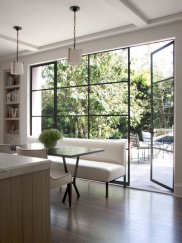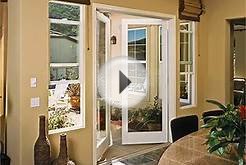System glitches alter ICC code development path for 2016
State and local jurisdiction adoption and enforcement of the 2015 International Building Code, 2015 International Residential Code and 2015 International Energy Conservation Code continues to grow. As of press time, the International Code Council website reports that the 2015 IBC is being enforced either statewide or locally in five states, and the 2015 IRC and 2015 IECC in three states. At the...- Authors Note: While The Gary Law Group has written articles for Window & Door over the years, we are pleased to be given this opportunity to join the 21st century and pen our first Talk. Our firm focuses on providing legal services to the fenestration industry and we look forward to tapping into that expertise to provide you with blog posts throughout 2016. We seek and appreciate any and all...
- Courtesy of the American Architectural Manufacturers Association How to Use this Guide This article focuses on the requirements of the 2015 editions of the IRC and IECC for residential fenestration, with emphasis on the changes that have occurred between the 2012 and 2015 editions of those codes. The user of this summary is cautioned, however, that it is not intended to be a full discussion of...
- During my years of window replacement, I was only somewhat acquainted with clear opening size requirements for Emergency Escape and Rescue Openings—5 square feet for first floor bedrooms and 5.7 square feet for upstairs bedrooms. That was about all I knew off the cuff. I also referenced window manufacturers’ standard sizing tables that identified what sizing met egress...
- The World Millwork Alliance (formerly AMD), will host its 51st annual convention and tradeshow October 31 through November 4, 2015 at the Cobb Galleria Convention Centre in Atlanta. Get a sneak peek at what the exhibitors will have on display. See the products...
- Win-door North America, held Nov. 3-5, 2015 at the Metro Toronto Convention Centre, features machinery, doors, hardware, wood products and systems, the latest computer software, testing services and more on display for fenestration and door professionals. Click below for a sample of what you’ll see from exhibitors. See the products...
- In each of our regions, we become accustomed to “typical characteristics” of existing housing that affect our fenestration replacements. These include certain wall construction, exterior cladding materials, recurring window frame material, and physical sizes of the homes. This deceptively large triple located just below a 20-foot ceiling required an interior scaffold. (Images...
- About 10 p.m. the evening of June 22, 2015, I learned I was under a tornado warning via both my local news station and a weather alert on my cell phone. The words “tornado warning” mean a tornado has either been spotted or is eminent. Those words, along with the lightning show going on outside my windows, convinced me to seek shelter. I live in a ranch home over a crawlspace. Not yet being...
- The industry is constantly looking for what’s next in terms of style, energy efficiency, and innovative manufacturing. As one of our Crystal Achievement Awards judges noted, the companies that are recognized with our Crystal Achievement Award “are listening and have showed they continue to add to or improve their offerings to fulfill those needs.” Selected by a panel of judges...















Whether you could cool a kitchen this way depends on whether you could get the heat coming off the external coils out the windows and whether the air outside is cooler than the exterior coils of the fridge. In all likelihood most of the heat coming off the coils would stay in the kitchen (rather than going out the windows) and rather than cooling it, you would heat up the kitchen while the refrigerator compressor continued to run (until the compressor burned out from continuous operation). Remember that a refrigerator cools the inside of the fridge by pumping the heat out of the interio…
No it would actually add heat. The refrigerator takes the heat from inside and puts it in the room, it also adds the heat from the electricity it uses. Look on the back of the refrigerator and there are tubes there the tubes transfer the heat to the room. It would feel cool for a few minutes because of the cool stored inside. but not long.